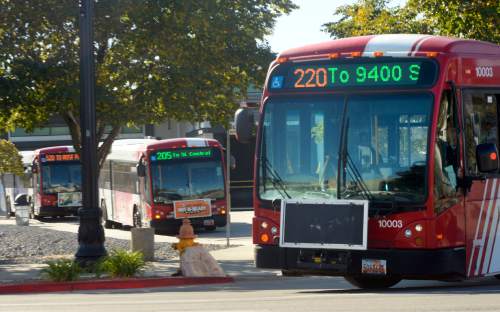This is an archived article that was published on sltrib.com in 2016, and information in the article may be outdated. It is provided only for personal research purposes and may not be reprinted.
... Or maybe the folks at the Utah Transit Authority, whose proclivity for global travel is high on the list of reasons why the transit-tax-raising Proposition 1 crashed and burned at the polls in November, could just read this article.
— Here's how Houston boosted mass transit ridership by improving service without spending a dime — Matthew Yglesias | Vox
"Last year, Houston took a stab at doing something that sounds too good to be true — drastically improving its mass transit system by redoing the way its bus routes work, without spending a dime of extra money. Early results are now in, and it appears to be working. Bus ridership is up 4 percent on local routes and up 6 percent on park-and-ride routes — even as the city adds two new light rail lines (this part, obviously, did cost money) and ridership surges on the existing light rail red line. ...
" ... The basic philosophy behind Houston's reform is simple. Rather than run a large number of low-frequency bus routes that look good on a map, concentrate vehicles on a smaller number of high-demand routes. This ensures that buses arrive frequently on the routes that riders are most likely to want to take. The result is a system that has fewer bus routes overall but a much richer network of frequent bus routes, where a person can show up at a station and wait for the next bus without consulting a schedule in advance. ..."
Running fewer routes, but a lot more frequently, is already kind of the TRAX model. In Salt Lake City, much of the complaining is that internal circulation, say from the Avenues to Downtown or Sugar House, is lacking as UTA focuses on getting commuters from SLC to Provo or Ogden. So I'm not sure if fewer routes, run more often, is what we need.
But from limited personal experience, I can tell you that a couple of days in New York or, especially, London, where some buses and trains show up about every three minutes, can spoil a rider really quickly.



